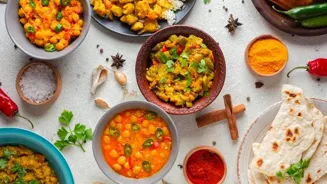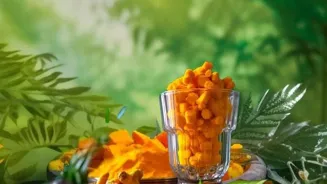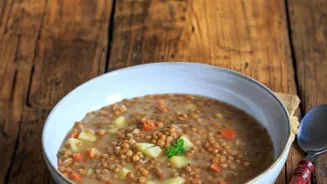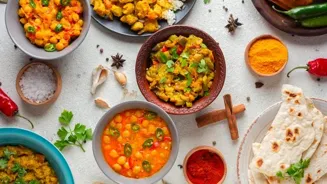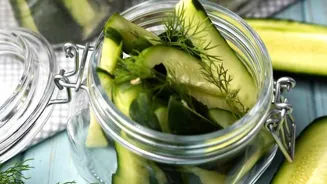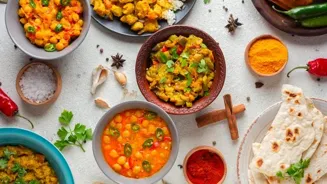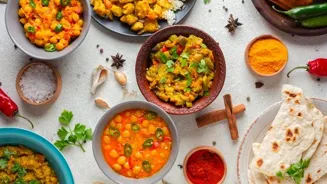Unlock the secrets of Indian cooking with 10 game-changing techniques. Elevate your dishes from basic to brilliant!
Namaste, food lovers! Are you ready to take your culinary skills from basic to brilliant?
Indian cuisine, with its symphony of flavours and aromatic spices, can seem a bit intimidating. But trust us, with a few clever techniques up your sleeve, you can unlock a world of delicious possibilities.
Forget slaving away in the kitchen all day. These ten Indian cooking techniques are designed to be efficient, flavourful, and totally doable for the home cook. Get ready to impress your family and friends with restaurant-quality vegetarian dishes right from your own home!
Tempering or 'Tadka' elevates dishes with aromatic spices
First up is the magic of 'Tempering' or 'Tadka.' This involves heating oil or ghee (clarified butter) and then infusing it with whole spices like mustard seeds, cumin seeds, dried chillies, and curry leaves.
The hot oil extracts the essential oils from these spices, creating an aromatic and flavourful base that is then drizzled over dals, vegetables, or even yogurt dishes. The 'tadka' not only adds a burst of flavour but also enhances the visual appeal with its vibrant colours.
Think of it as the final flourish that elevates a simple dish to something truly special. It's the secret weapon behind many delicious Indian dishes, adding depth and complexity with minimum effort. Don't be shy with the spices – experiment to find your perfect blend!
Remember to keep the heat on medium so as not to burn them.
Dry roasting spices enhances flavor, aroma, and aids in grinding
Next, we have 'Dry Roasting' of spices. Before grinding spices into powders, roasting them lightly in a dry pan unlocks their full potential. This process intensifies their aroma and flavour, creating a more complex and nuanced spice blend.
Think of it like toasting nuts to bring out their nutty flavour. Dry roasting also helps to remove moisture from the spices, making them easier to grind and preventing them from clumping together. Cumin, coriander, fennel, and peppercorns are all excellent candidates for dry roasting.
Keep a close eye on them as they roast, shaking the pan frequently to ensure even cooking. Roast until they are fragrant and slightly darker in colour but be mindful of burning!
Pressure cooking: A time-saving technique for flavorful dishes
Moving on to 'Pressure Cooking', the busy cook's best friend! This technique drastically reduces cooking time for beans, lentils, and tough vegetables. The high pressure creates a scorching environment where food cooks much faster than traditional methods.
It also helps to retain moisture and nutrients, resulting in tender and flavorful dishes. Pressure cooking is a game-changer for dishes like chana masala (chickpea curry) or rajma (kidney bean curry), reducing the cooking time from hours to just minutes.
The traditional pressure cooker has been replaced by the Instant Pot, which is an electric cooker with the pressure cooking function. Just make sure to follow safety precautions and use proper pressure release techniques.
Dum Cooking: Slow-cooking with sealed pot for flavorful dishes
Now, let's talk about 'Dum Cooking'. This slow-cooking method involves sealing the ingredients in a pot, usually with a layer of dough or a heavy lid, and cooking them over low heat. The steam trapped inside the pot gently cooks the food, allowing the flavours to meld together beautifully.
Dum cooking is perfect for dishes like biryani or pulao, where the rice absorbs the flavours of the spices and vegetables. The result is a dish that is incredibly aromatic, moist, and flavourful.
Some use a wet cloth, tied around the lid, to ensure the steam doesn’t escape during the cooking process. Traditionally, hot coal was put on the lid for an even cooking.
Homemade ghee enhances flavors in Indian dishes
Our fifth technique is the beautiful art of 'Making Ghee'. Homemade ghee has a richer flavour and aroma than store-bought versions. Ghee is also easier to digest as the milk solids have been removed. Simmering butter until the milk solids separate and the nutty-flavored ghee remains.

Although it requires time, it is incredibly rewarding. Ghee adds a depth of flavour to many Indian dishes, adding nutrients, and flavour. Use homemade ghee for "tadka" for an even richer taste.
Soaking lentils and beans reduces cooking time and improves digestibility by breaking down complex sugars
Another important technique "Soaking Lentils and Beans". It reduces cooking time and improves digestibility. Soaking helps to break down complex sugars called oligosaccharides. This releases gas in the stomach. For lentils and beans, that can cause discomfort. Overnight soaking is recommended
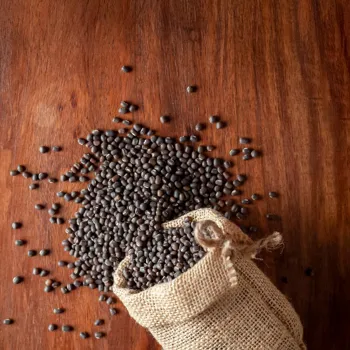
Fresh herbs enhance Indian dishes with flavor and freshness
Using Fresh Herbs'. Fresh herbs like coriander, mint, and curry leaves can add a burst of freshness and flavour to Indian dishes. Chop them finely and add them towards the end of cooking for the best flavor.
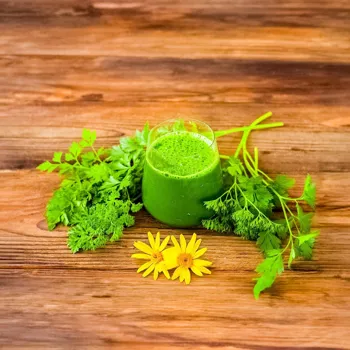
Experiment with different combinations of herbs to create your own signature flavour profiles. You may use it as garnish as well, while serving. This can also add aroma for diners.
Indian staple: Ginger-garlic paste adds depth to dishes
Ginger-Garlic Paste'. This is a staple in Indian cooking. It forms the base for many curries and stews. It adds depth and warmth to your dishes. It's easy to make at home by blending fresh ginger and garlic with a little water.
You can also buy it ready-made from the store, but homemade paste always tastes better. Once ginger garlic paste is made, store it in an container and keep it in the fridge. It can last till one week.
Marinating vegetables with yogurt for succulence
Marinating with Yogurt'. Marinating vegetables will impart a delicious tart flavour. Yogurt acts as a tenderizer, making the vegetables more succulent. It can be used for paneer and mushrooms. The marinating process usually takes about 30 minutes. You need to grind all the spices to fine powder.
Then put the yogurt in a bowl, churn it a bit. Then add spice powder and mix well. Then add the vegetables.
Explore 'Balancing Flavours' in Indian cuisine for harmony
Finally, let's explore the technique of 'Balancing Flavours'. Indian cuisine is all about creating balance between sweet, sour, salty, and spicy flavours. Pay attention to the proportions of each ingredient in your dishes. Adjust the seasoning as needed to achieve the perfect harmony.
Add a touch of lemon juice, sugar, or tamarind paste to balance the flavours. Remember, cooking is all about experimenting and finding what works best for you.
AI Generated Content. Glance/InMobi shall have no liability for the content